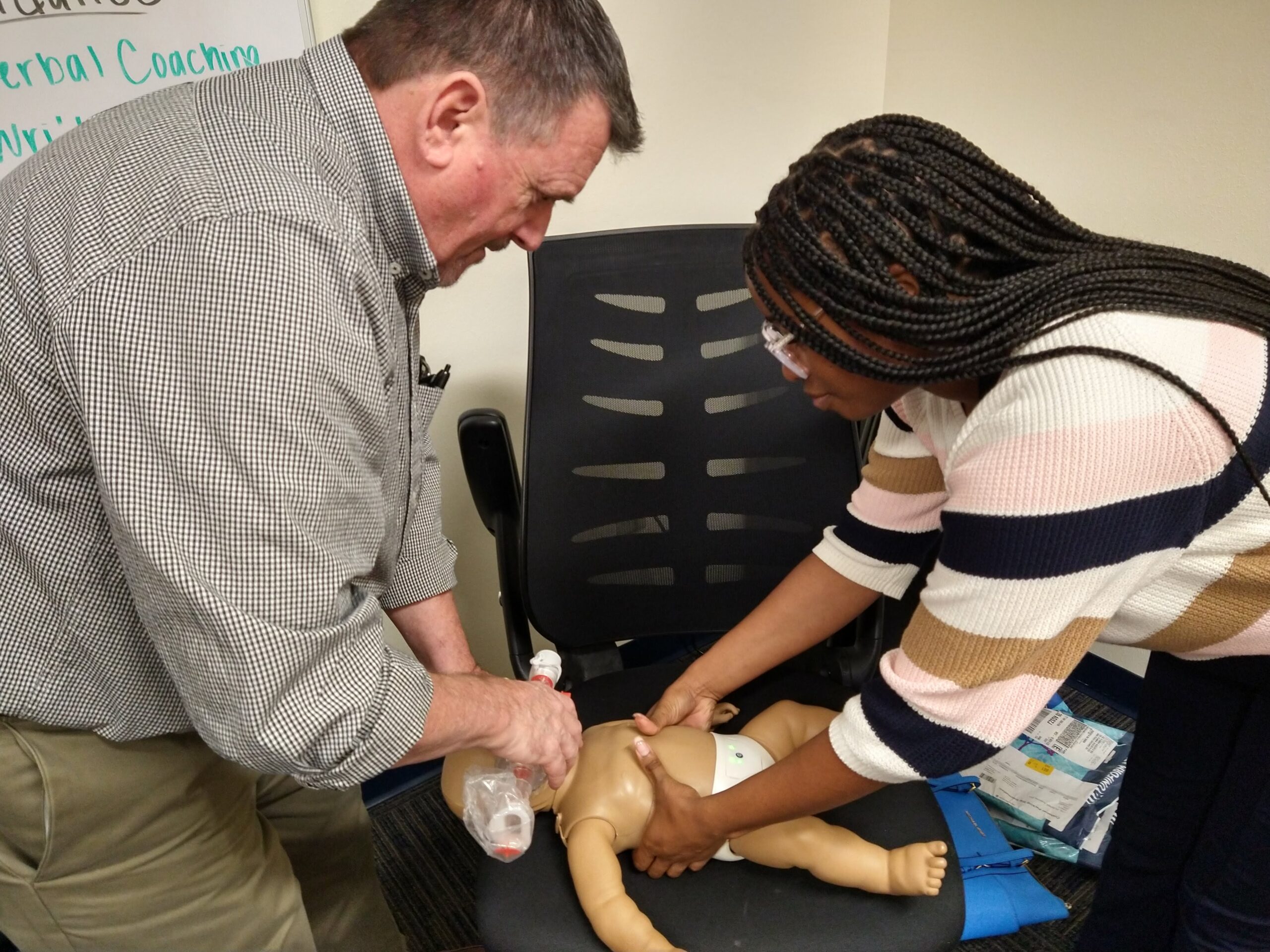This course is designed for individuals working in healthcare or rescue services who require professional-level basic life support (BLS) training. This course is approved for Emergency Medical Services personnel training. The course is approximately 2.5-3 hours long, and the certification period lasts up to two years. There are no prerequisites required. The course covers a wide range of topics, such as sudden cardiac arrest and early defibrillation, chain of survival, personal safety, chest compressions, rescue breaths with CPR mask, rescue breaths with bag valve mask, rescue breaths with other considerations, primary assessment for unresponsive patients, recovery position for unresponsive and breathing patients, rescue breathing for unresponsive, not breathing, and has a pulse patients, CPR for unresponsive, not breathing, and pulseless patients, automated external defibrillators, basic AED operation, troubleshooting and other AED considerations, team approach, choking, legal considerations, emotional considerations, and naloxone. Basic life support, or BLS, training provides healthcare professionals with the ability to recognize different life-threatening emergencies, such as choking, provide cardiopulmonary resuscitation (CPR), and use an automated external defibrillator (AED) in a safe, timely, and effective manner. Trained medical personnel, such as doctors, nurses, emergency medical technicians, paramedics, respiratory therapists, physical and occupational therapists, physician’s assistants, residents or fellows, or medical or nursing students in training, aides, medical or nursing assistants who have obtained BLS training, can provide basic life support. BLS training is also useful for many other professions, such as daycare providers, coaches, teachers, personal trainers, security personnel, and social workers because of their contact with many different people and exposure to various circumstances where medical emergencies can occur. Acquiring basic lifesaving skills that may come in handy is a good opportunity for everyone. Basic life support is the level of medical care given to patients with life-threatening conditions until they can be given full medical attention in a hospital. Therefore, it is generally used in the pre-hospital setting and can be provided without medical equipment or drugs. Basic life support involves various life-saving techniques that focus on the CAB of pre-hospital emergency care: Circulation – techniques which maintain an adequate blood supply to vital organs, ensuring oxygen delivery to all cells and removing metabolic waste. Airway – management of the victim’s airway to protect and maintain a clear passageway for gases between the lungs and the atmosphere. Breathing – maintenance of rhythmic inflation and deflation of the lungs to ensure adequate respiration. BLS training provides healthcare providers with the confidence and skills necessary to give lifesaving aid to a person who needs emergency care due to injury or illness. Examples of life-threatening circumstances include heart attacks, stroke, choking, drowning, bleeding, and more. Healthcare providers who complete BLS training receive a certification that is valid for two years. Renewal of certification may be required thereafter. Guidelines for Cardiopulmonary Resuscitation and Emergency Cardiovascular Care are constantly updated based on observations and studies that evaluate the effectiveness and safety of current guidelines. Therefore, it is important to undergo BLS training, even for well-trained healthcare providers, to learn new recommendations and changes in algorithms. Although CPR can be performed by any bystander, trained or untrained, the quality of CPR performed is crucial to the survival of the victim. BLS training for healthcare providers will help improve a patient’s chances for surviving a life-threatening emergency situation. References: BLS for Healthcare Providers – Classroom. AHA. Berg RA, Hemphill R, Abella BS, Aufderheide TP, Cave DM, Hazinski MF, Lerner EB, Rea TD, Sayre MR, Swor RA. Part 5: Adult basic life support: 2010 American Heart Association Guidelines for Cardiopulmonary Resuscitation and Emergency Cardiovascular Care. Circulation. 2010;122(suppl 3):S685–S705.
Pulse CPR School Serving Augusta,GA. Evans,GA. Martinez,GA. Grovetown,GA. North Augusta,SC. Aiken, SC. Thomson,GA. Lincolnton GA. Statesboro,GA. Waynesboro,GA. Edgefield,SC.Belvedere, SC. Clearwater, SC. Clearwater, SC. Hephzibah, GA. Gloverville, SC.
Harlem, GA. New Ellenton, SC.
Keysville, GA. Dearing, GA.
Appling,GA. - Copyright 2023 - -All Rights Reserved. American Heart Association.


